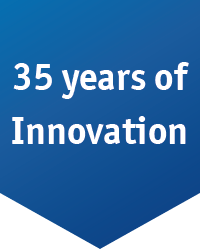Exhibition highlights transport logistic
29.03.2017
Expirience our software solutions live in Munich!
Experience live the software solution for rail logistics zedas®cargo and the solution for asset management zedas®asset live at transport logistic in Munich in Hall B4 / Stand 427.
Special highlights are:
- New version for track capacity management in ports
- Mobile applications for rail logistics
- Optimum maintenance thanks to a comprehensive software solution
New version for track capacity management in ports
The planning and calculation of track capacities and the optimal coordination of rail logistics processes in ports requires a high level of coordination between the port management, railway undertakings (RU) and terminals. zedas®cargo provides support in simplifying process flows and making optimal use of available track capacities. The synchronisation of process flows between the port railway and terminals minimises waiting times and improves the flow of traffic in the port.
A web-based application offers RUs the option of creating and editing requests for track or terminal use directly through the online portal. The port management can coordinate and approve the usage request centrally with the help of Gantt charts. The usage fees are automatically determined based on the customer contracts and settlement rules on file and are provided for invoicing.
Mobile applications for rail logistics
The mobile application for zedas®cargo makes it possible for locomotive drivers, wagon technicians and inspectors at any location to access selected information and to then use this information for the tasks that their jobs involve. The use of these applications reduces the number of complex consultation meetings required, as well as the keeping of records and automatically delivers exact data for the invoicing of services provided.
Optimum maintenance thanks to a comprehensive software solution
With zedas®asset, all procedures involved in the technical asset management process can be provided with IT-support.
Besides the consistency of the solution, the analysis, documentation and prognosis are particular performance characteristics. The condition data derived from systems and vehicles in operation are used to determine critical conditions. This makes it possible to derive maintenance data, for example, for steering deadlines. Via the complete recording of component replacements, what used up time and materials, as well as condition information from systems or vehicles, a comprehensive system and vehicle history is created, which involves the required ECM-conforming workshop documentation being illustrated for the area of rail vehicles. History and current data when combined allow the vehicle’s future condition to be derived, and so make a condition-oriented maintenance possible.
We invite you to join to see the advantages and benefits of our solutions. Convince yourself at transport logsitc 2017 from 09 to 12 May 2017 in Hall B4 | 427.
Please feel free to arrange an appointment.








